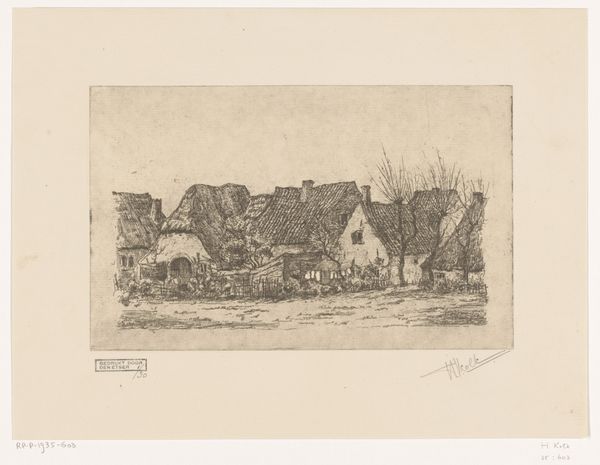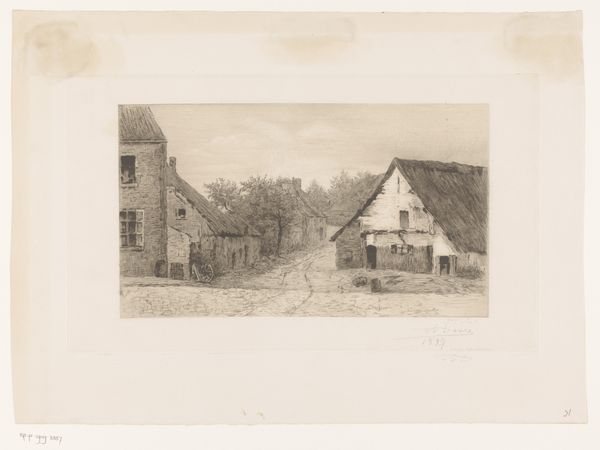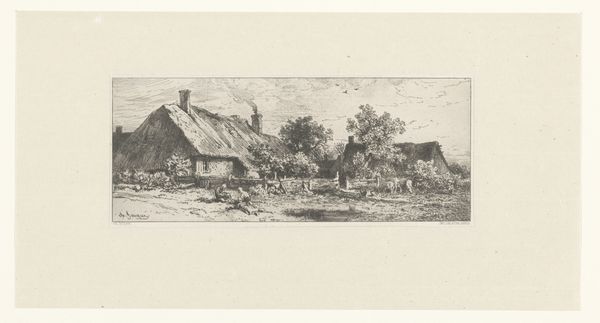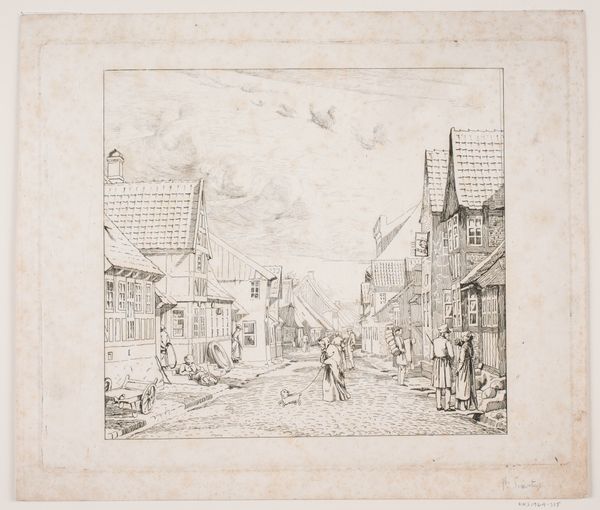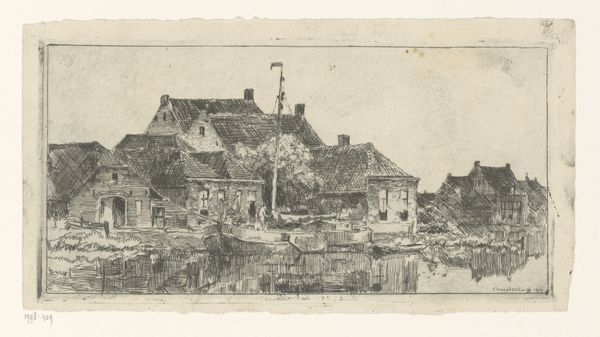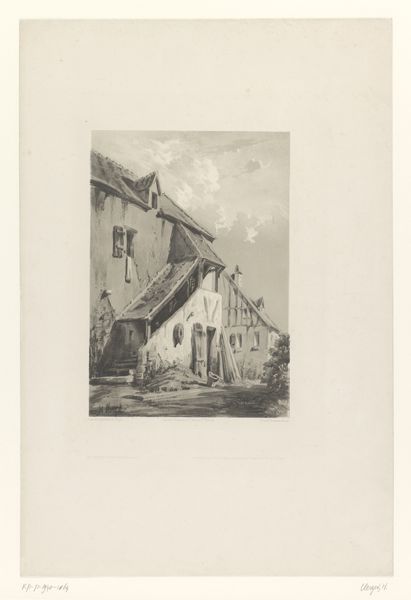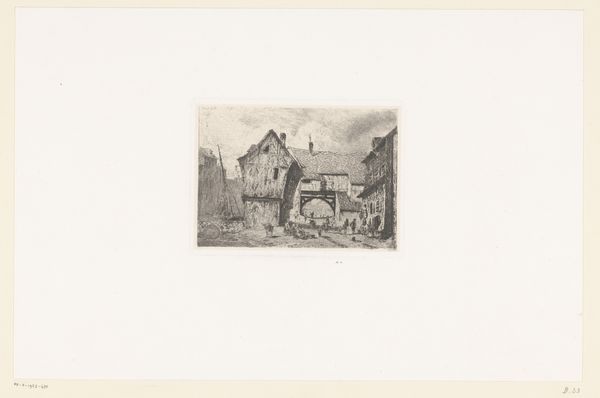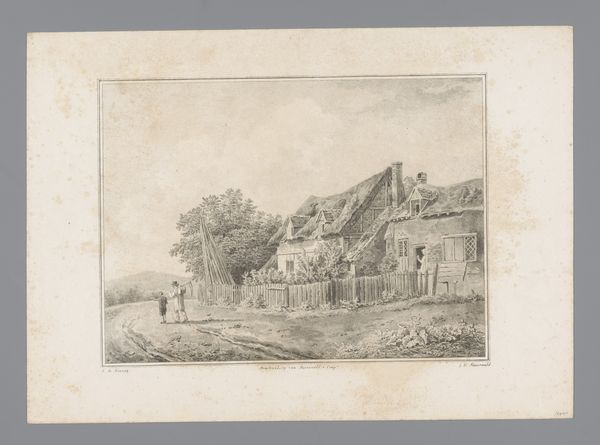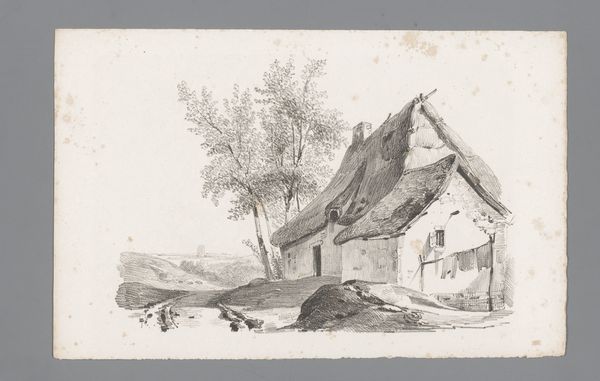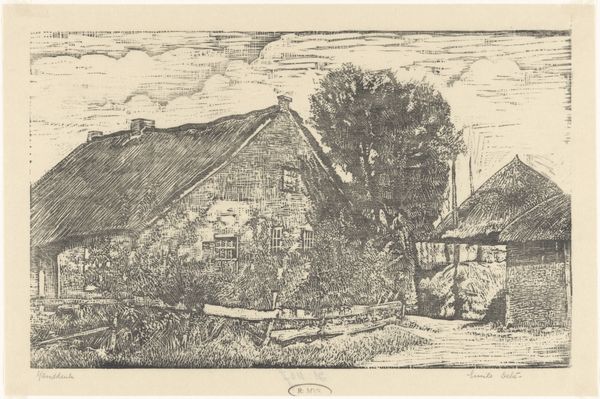
drawing, paper, pencil
#
drawing
#
landscape
#
paper
#
pencil
#
realism
Dimensions: height 122 mm, width 158 mm
Copyright: Rijks Museum: Open Domain
Editor: So, we're looking at "Hooiwagen in dorpsstraat" or "Hay Wain in a Village Street" by Cornelis Vreedenburgh. It's a pencil drawing on paper, probably made sometime between 1890 and 1946, currently held at the Rijksmuseum. There's almost a hazy quality to the drawing, and the everyday subject matter feels very immediate. What are your thoughts when you look at this piece? Curator: It strikes me as a careful negotiation between representation and the inherent properties of its making. Vreedenburgh is depicting labour, a hay wain being hauled through the street, but using a 'humble' material, pencil on paper. There’s no gilding, no attempt to disguise the means of production. In that way, the image itself acknowledges and embodies the daily labour it depicts. The realism grounds us. What do you think about the subject matter itself? Editor: It feels very unromantic. I mean, compared to some landscapes which try to highlight the majesty of nature. This is just... a street, a cart full of hay, some ordinary buildings. Curator: Precisely! And consider what that 'ordinariness' signals. It’s not meant to be exceptional; it reflects the everyday experience of working people and the environments they inhabit. Vreedenburgh focuses our attention on the processes of agricultural production and distribution, right down to the very materials he uses. The artistic labor mirrors the literal labor depicted. Does it alter your impression when considering those themes? Editor: It does. It makes me wonder about the artist's intentions, like, was he consciously making a statement about the value of labor? Or was it simply documenting his surroundings? Curator: We can only speculate, but by choosing this subject and medium, Vreedenburgh elevates these overlooked aspects of material existence into art, asking the viewer to consider the systems and processes around us, to ask "where things come from", maybe? To also appreciate the artistic hand that guides that experience. Editor: That’s fascinating. I guess looking at the materials really changes how you interpret the subject itself! Curator: Indeed. Sometimes looking closely at materiality helps us to appreciate how everyday objects were made, handled and consumed in a different time. And how labor connects us all.
Comments
No comments
Be the first to comment and join the conversation on the ultimate creative platform.
